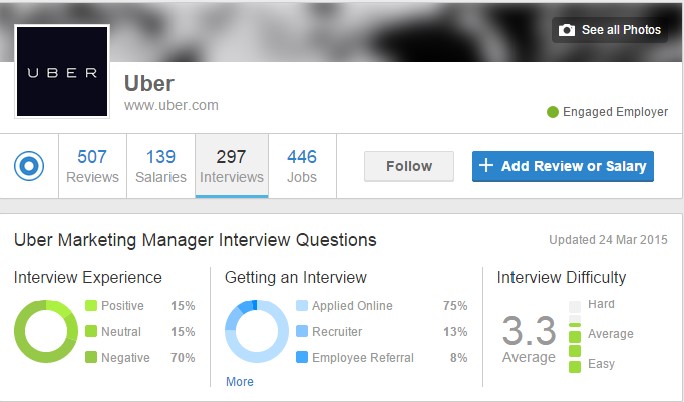Uber’s marketing: The good, the bad, & the gimmicky
For those of you who don’t already know, Uber started life in 2009 in San Francisco, and what started as a top-end luxury car service in one state in America has since become an international taxi lift app phenomenon. Uber is regarded by many in the UK to be the best thing since sliced bread, although this feeling certainly isn’t shared by traditional black cab drivers. I can understand this dislike, but there’s no denying the benefits of Uber’s customer-friendly (and pocket-friendly) business model. It just works.
But how have they got to this position, and what can we learn from their marketing?
Local & Grassroots Marketing
Use my UBER invite code, gemmab306, and get a free taxi ride! Works worldwide. Go here: https://t.co/14sJGz0KrV
— ♡ Little Mix ♡ (@LittleMixerHQ) June 13, 2015
Uber are very good at grassroots marketing whereby they offer free rides to new users, and incentives also to those who ‘spread the word’. They also employ local people when they start out in a new area, to firmly get their branded feet under the geographic door. Here’s an example of Uber’s clever local marketing focus: Uber is currently not allowed to operate in Calgary in Alberta, so they went in and offered free rides for a $5 charity donation that benefited the community. This proved very popular, with hundreds of rides taken and therefore thousands of dollars raised for the charity. This therefore made Uber look great in the eyes of the people of Calgary.
Turning Situations Around
On 11th June 2015 taxicab drivers brought central London to a total standstill in a protest against Uber who, according to the Licensed Taxi Drivers Association, were operating illegally. It was proven that all is above board, but London’s black cab drivers are still disgruntled to say the least. How did Uber deal with this situation? In a very clever way, which is the usual response from this game-changing company. Uber decided to use the strike to their advantage, and added the traditional black cabs to their app as an option for users on that very same day. And what became of this? The strike paired with this reaction made national news, and resulted in Uber’s biggest sign-up day to date, which involved an 850% increase in app downloads! Uber certainly know what they are doing.
Stunt Marketing
A dose of cuteness in the office today. Thank you @AWLQ and @Uber_Brisbane #Uberkittens pic.twitter.com/7CTGUtn0mK — Louise Hart (@Louiedee83) February 5, 2015
PR stunts are another of Uber’s strong points, and there have been delivery gimmicks a plenty. These have included: #UberKittens #UberCHOPPER #UberIceCream #UberBBQ #UberEats All of these have got people talking, so mission accomplished: the word has spread. UberKITTENS launched in the US and, later, Australia. It was met with a mixed reaction, seeing as the kittens were from re-homing centres and were driven around to offices for 15 minute petting sessions. Some loved the idea, others found it cruel. Everyone had an opinion though. Of course, individuals or companies with high influence on social media were chosen as priorities for these fluffy deliveries to ensure everyone heard all about it.
Only media outlets and ppl with HUGE Instagram followings got #uberkittens. Fellow internet stooges, we’ve been had by a PR team.
— Sophie Benjamin (@sophbenj) February 5, 2015
Where Do Uber Get Their Marketing Ideas From?
On Glassdoor there is currently a bad vibe around Uber Marketing Manager interview experiences, as you can see below. Whilst there are many interviews happening, the majority of experiences are negative, with an interview difficulty rating of ‘average’. Further reading unveils a world of concern about Uber using their initial Marketing Manager Creative Assignment – which is often the first stage in the process, after the initial online application – as a tactic to farm new creative ideas. I am not here to decide whether this is true or not; perhaps ideas people suggested on their assessments were highly generic, perhaps it is all a coincidence, perhaps they are farming ideas. Or, maybe they just have a great marketing and PR team.

Last week Uber released their mobile video game, and even this has a clever triple purpose; the game is supposed to let you have a ‘day in the life on an Uber driver’ experience, but it is clearly a recruitment tool for new drivers, and a training session for current drivers. So whilst, as a game in itself, it is pretty naff, it’s a little something to keep them in the public eye, and it’s growing Uber’s size at the same time.
Concluding Thoughts
Uber’s key marketing strategy seems to be utter relentlessness. All publicity is good publicity, even when it’s bad; Uber always manage to turn it around and come out looking good! They generate as much exposure as possible, and then deal with any fallout that occurs from that. Uber have had all manner of incidents talked about in the press, including alleged groping by a few drivers (internationally) and yet still we all use them. I personally still feel safer in an Uber, as I have the driver’s details (name, photo, etc) and ride details right there on my phone.
Uber’s app is a breakthrough in the way we book paid lifts and therefore sells itself to a certain extent. Their PR and marketing team do incredible work too, and if they keep it up Uber will be around for a very long time to come.
Resources
Glassdoor.co.uk Telegraph.co.uk Growthhackers.com Shinyshiny.tv Mic.comFeatured image credit: Pixabay